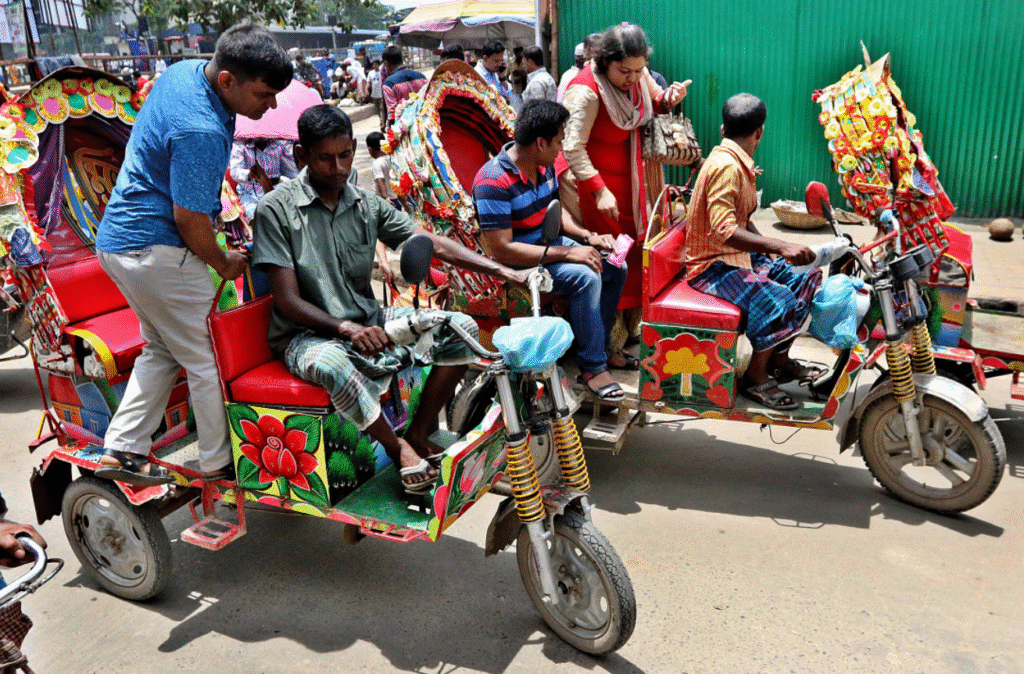Since the British era, pedal rickshaws have been at the forefront of urban and rural transportation for the entire population of Bangladesh. Be it taking children to school, going to bazaar for groceries, or enjoying an afternoon ride, generations of families have enjoyed door-to-door services of rickshaws in their daily lives. Pedal rickshaws are embedded in our culture, much like Bangkok’s iconic “Tuktuks,” the Filipino “Habal Habal” or Kolkata’s hand-pulled rickshaws. Rickshaws were originally introduced in the subcontinent by the colonialists to exercise their power and portray class differences to the colonised.
In recent years, there has been a debate about the suitability of pedal versus battery-powered rickshaws in today’s Bangladesh. We also witnessed demonstrations by both groups of rickshaw drivers in recent months. Both types of rickshaws have benefits and drawbacks, so there needs to be a thorough analysis at the national level to determine the future of millions of rickshaw pullers and drivers. This article will try to dig into the arguments raised by different groups from a socio-economic perspective.
One of the major challenges in incorporating battery-powered rickshaws into our cities is the cost of batteries and their installation. For rickshaw pullers, most of whom are financially vulnerable, transitioning to battery-powered rickshaws can be a costly undertaking with many, particularly in Dhaka, not owning their rickshaws. Instead, they rent them from contractors or businessmen who typically have fleets of 10 to 20 rickshaws, charging a fixed daily fee. As battery-powered rickshaws gain popularity, more owners are likely to replace traditional pedal rickshaws with battery-operated ones. However, the high cost of batteries may force them to reduce the size of their fleets, which could lead to significant unemployment in the rickshaw industry.
Another issue is that 90 percent of the nation’s rickshaw-charging garages rely on illegal or bypassed electricity connections. As a result, rickshaw pullers do not pay for electricity, causing losses for the Dhaka Power Distribution Company, Dhaka Electric Supply Company, and Bangladesh Rural Electrification Board.
However, battery-powered rickshaws offer greater mobility compared to pedal rickshaws due to their consistent speed and longer range. According to a research paper titled “Impact of Pedal Powered Vehicles on Average Traffic Speed in Dhaka City,” roads without rickshaws have an average speed of about 20 kilometres per hour, whereas roads with rickshaws average only 11 kilometres per hour. This shows that pedal rickshaws slow down traffic, creating obstacles for cars, motorcycles, and buses.

